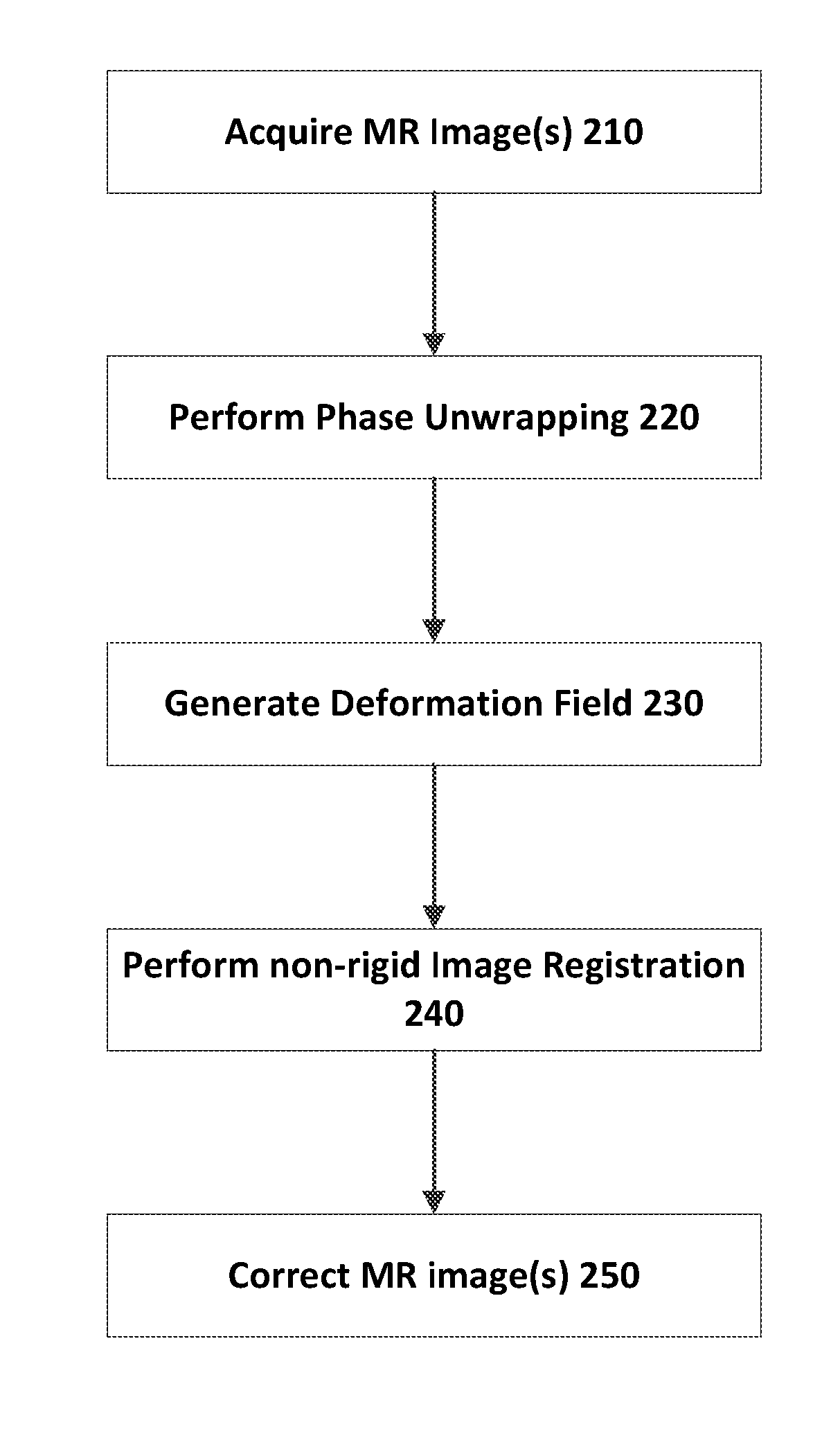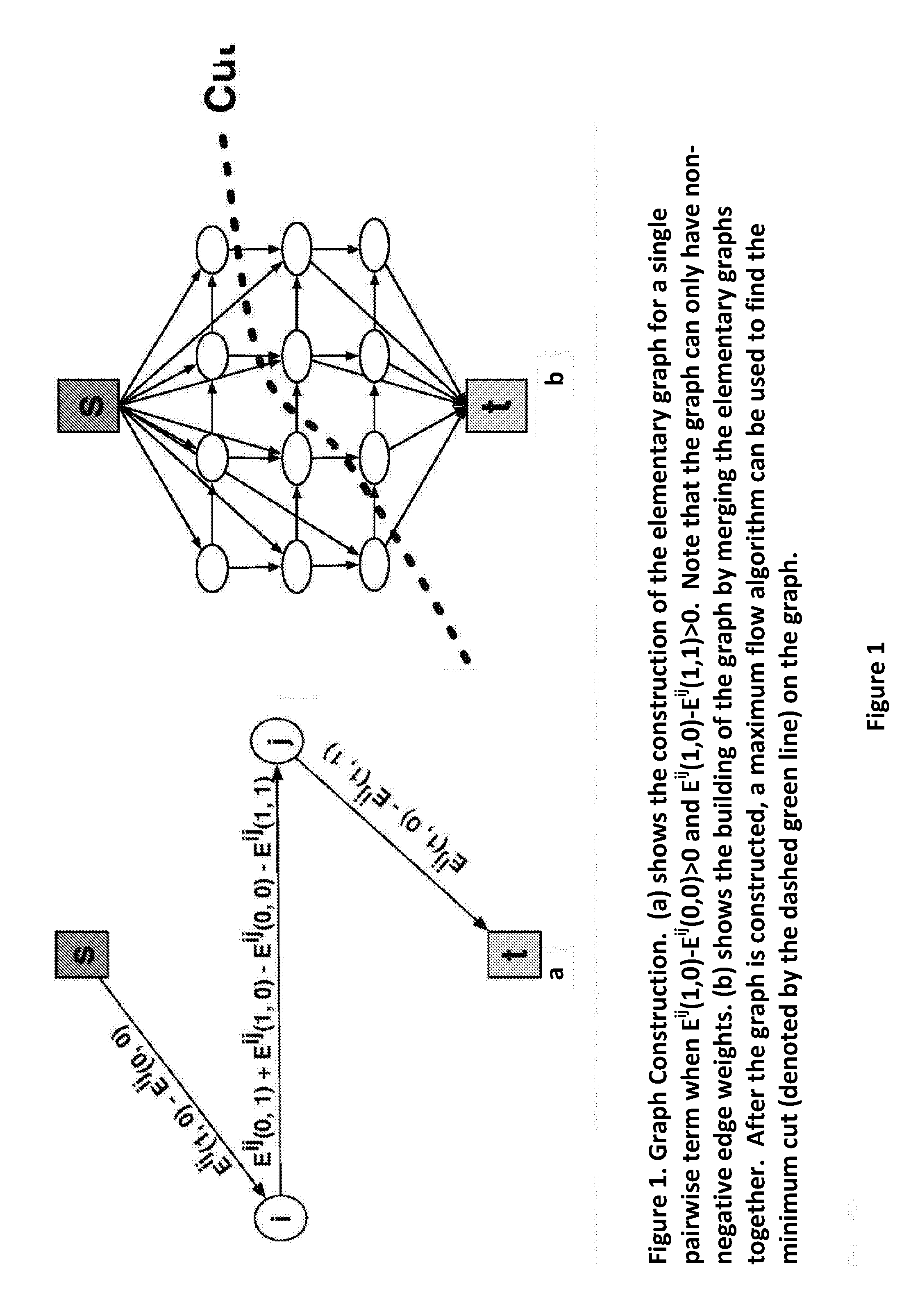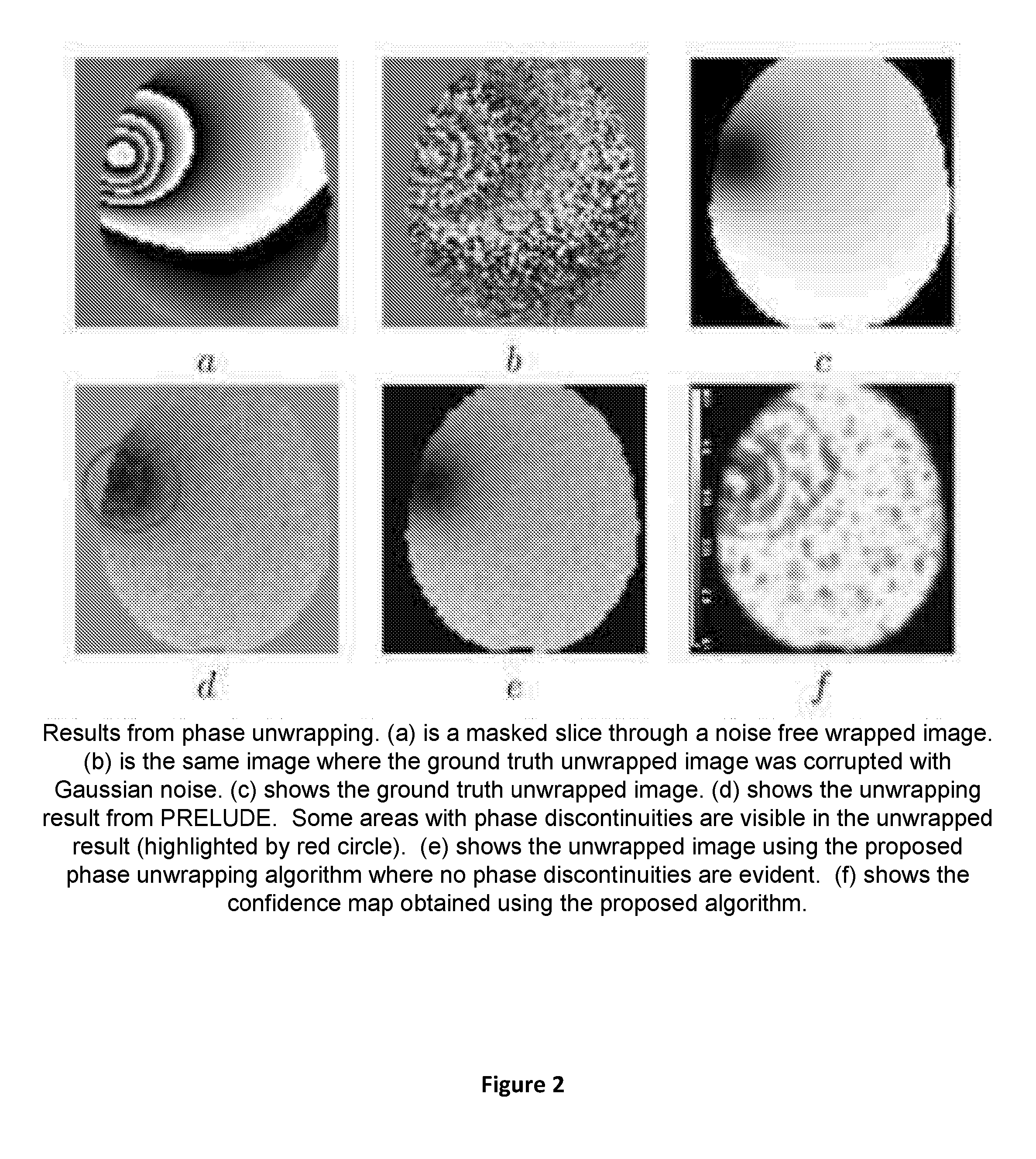Apparatus and method for correcting susceptibility artefacts in a magnetic resonance image
- Summary
- Abstract
- Description
- Claims
- Application Information
AI Technical Summary
Benefits of technology
Problems solved by technology
Method used
Image
Examples
Embodiment Construction
1. Methods
A. Phase Modelling
[0043]A known method for estimating the field map is to use the phase difference between two MR images acquired at different echo times. However, the phase images are uniquely defined only in the range of (−π, π] and hence the phase images need to be unwrapped at each voxel by an unknown integer multiple of 2π to obtain the true phase as in eq. (1).
φt(i)=φw(i)+2πni (1)
where φt(i) is the true phase at a given voxel i, φw(i) is the wrapped phase and n is the unknown integer multiple of 2π that needs to be estimated. Phase unwrapping is an ill-posed problem and becomes intractable without regularization.
[0044]Similar to [18], the phase unwrapping method can be modelled as a Markov Random Field (MRF) where the true phase φ(t) and the wrapped phase φ(w) are modelled as random variables. We aim to find the discrete label set n(i) that gives the maximum a posteriori (MAP) estimate of the phase wraps:
φt(i)=maxP(φw|φt)LikelihoodP(φt)Prior(2)
The likelihood term in...
PUM
 Login to View More
Login to View More Abstract
Description
Claims
Application Information
 Login to View More
Login to View More - R&D
- Intellectual Property
- Life Sciences
- Materials
- Tech Scout
- Unparalleled Data Quality
- Higher Quality Content
- 60% Fewer Hallucinations
Browse by: Latest US Patents, China's latest patents, Technical Efficacy Thesaurus, Application Domain, Technology Topic, Popular Technical Reports.
© 2025 PatSnap. All rights reserved.Legal|Privacy policy|Modern Slavery Act Transparency Statement|Sitemap|About US| Contact US: help@patsnap.com



